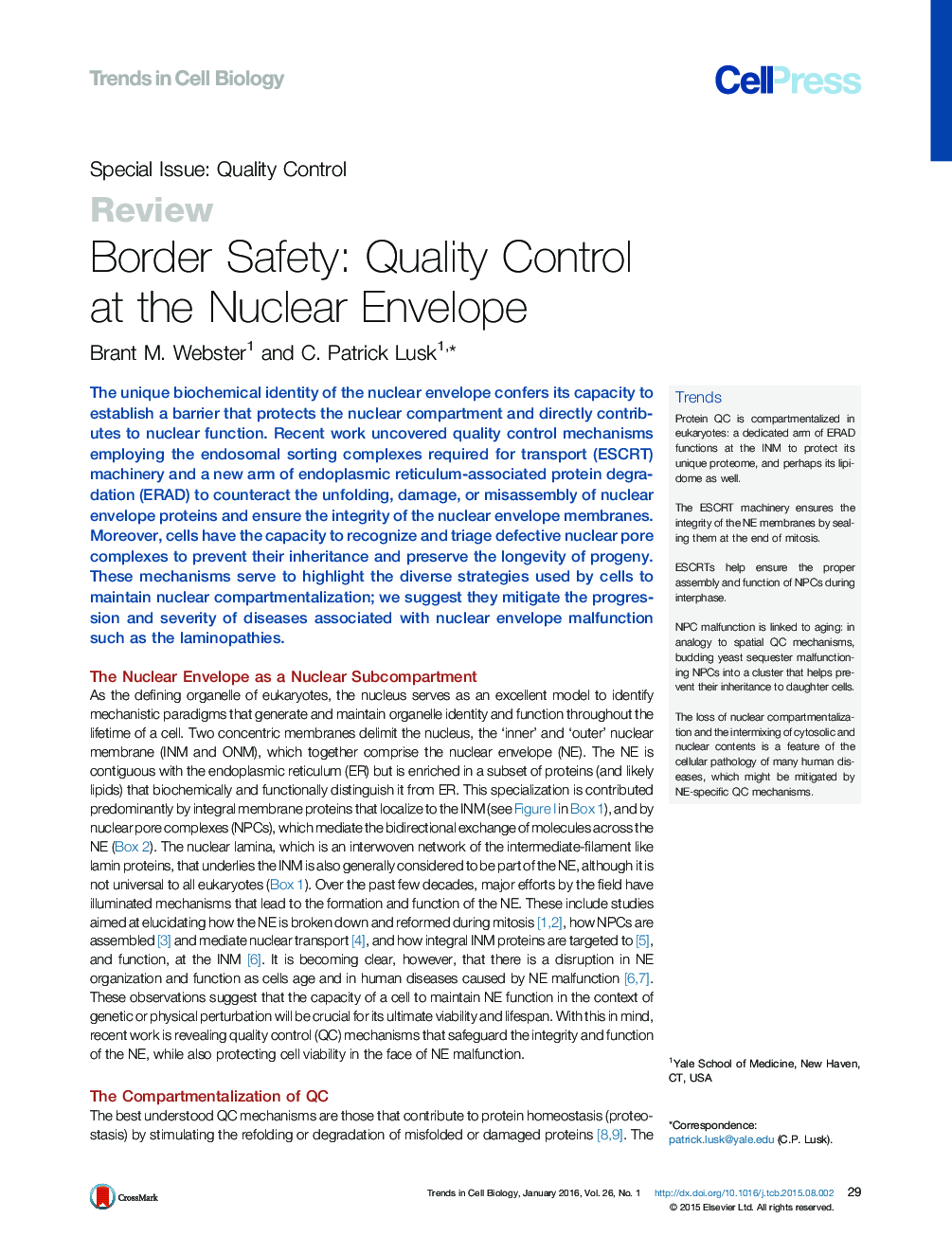| Article ID | Journal | Published Year | Pages | File Type |
|---|---|---|---|---|
| 2204327 | Trends in Cell Biology | 2016 | 11 Pages |
The unique biochemical identity of the nuclear envelope confers its capacity to establish a barrier that protects the nuclear compartment and directly contributes to nuclear function. Recent work uncovered quality control mechanisms employing the endosomal sorting complexes required for transport (ESCRT) machinery and a new arm of endoplasmic reticulum-associated protein degradation (ERAD) to counteract the unfolding, damage, or misassembly of nuclear envelope proteins and ensure the integrity of the nuclear envelope membranes. Moreover, cells have the capacity to recognize and triage defective nuclear pore complexes to prevent their inheritance and preserve the longevity of progeny. These mechanisms serve to highlight the diverse strategies used by cells to maintain nuclear compartmentalization; we suggest they mitigate the progression and severity of diseases associated with nuclear envelope malfunction such as the laminopathies.
TrendsProtein QC is compartmentalized in eukaryotes: a dedicated arm of ERAD functions at the INM to protect its unique proteome, and perhaps its lipidome as well.The ESCRT machinery ensures the integrity of the NE membranes by sealing them at the end of mitosis.ESCRTs help ensure the proper assembly and function of NPCs during interphase.NPC malfunction is linked to aging: in analogy to spatial QC mechanisms, budding yeast sequester malfunctioning NPCs into a cluster that helps prevent their inheritance to daughter cells.The loss of nuclear compartmentalization and the intermixing of cytosolic and nuclear contents is a feature of the cellular pathology of many human diseases, which might be mitigated by NE-specific QC mechanisms.
